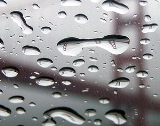
Refraction
Overview
Wave
In physics, a wave is a disturbance that travels through space and time, accompanied by the transfer of energy.Waves travel and the wave motion transfers energy from one point to another, often with no permanent displacement of the particles of the medium—that is, with little or no associated mass...
due to a change in its speed
Speed
In kinematics, the speed of an object is the magnitude of its velocity ; it is thus a scalar quantity. The average speed of an object in an interval of time is the distance traveled by the object divided by the duration of the interval; the instantaneous speed is the limit of the average speed as...
. It is essentially a surface phenomenon
Surface phenomenon
A Surface phenomenon is a phenomenon that takes place on or near the surface of a substance or phase. In most cases, the special properties of a surface cause these unique phenomena....
. The phenomenon is mainly in governance to the law of conservation of energy
Energy
In physics, energy is an indirectly observed quantity. It is often understood as the ability a physical system has to do work on other physical systems...
. The proper explanation would be that due to change of medium, the phase velocity
Phase velocity
The phase velocity of a wave is the rate at which the phase of the wave propagates in space. This is the speed at which the phase of any one frequency component of the wave travels. For such a component, any given phase of the wave will appear to travel at the phase velocity...
of the wave is changed but its frequency
Frequency
Frequency is the number of occurrences of a repeating event per unit time. It is also referred to as temporal frequency.The period is the duration of one cycle in a repeating event, so the period is the reciprocal of the frequency...
remains constant. This is most commonly observed when a wave passes from one medium to another at any angle other than 90° or 0°.

